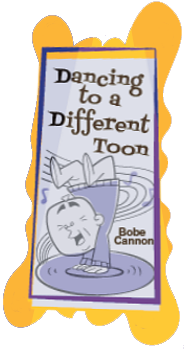How the Boing Doc Evolved
by Tee Bosustow, Producer/Director
The very first thought of a documentary was sparked by a UPA Tribute, produced by Marsha Jeffers and myself, at Filmex in Century City, California, in 1978. A two hour screening of the most important UPA films was shown, including home movies of the 1941 Disney strike, with audio comments by Art Babbitt, Bill Hurtz, and my dad, Steve Bosustow. An impromptu discussion followed, with Dave Hilberman, Steve Bosustow, Herb Klynn, Bill Hurtz, Jules Engel, and several others. The room was jammed packed …. and no one recored it. But, it did turn the light on for the first time, to do a documentary on UPA.
However, two decades elapsed before serious work began in 1998. It was largely paperwork, proposals and outlines, attending NAPTE conventions and independent Television Society meetings, and those ITVS meetings led me to put together a short presentation on Betacam that I was able to show at their 2001 NYC Film Market, just two weeks after 9/11. Sheila Nevins was there, among other lesser known industry leaders, and my intention then was to produce an hour long television documentary for HBO, but, Nevins was lass than thrilled with my video and written presentation. I was disappointed, but not discouraged. I continued to try to tweak it for HBO.
It wasn’t until 2003 that Jerry Beck saw what I was doing and had just the opposite feelings as Sheila Nevins. He encouraged me to put together the first major UPA Tribute since Filmex. We showed an hour of great UPA films and got some of the best former UPA staffers around for a panel discussion afterwards: Alan Zaslove, Bob McIntosh, Joe Siracusa, Eddie Friedman, Fred Crippen, and Mel Leven. Jerry was able to get the screening room at AFI through ASIFA, and he moderated. The room was jammed packed …. but, this time we did record it.
Somewhere along the way the one hour TV special became a 90 minute theatrical feature, and the dramatizations of the stories our experts tell changed from being the standard live-action dramatizations, to animated illustration, in the UPA style. Plus, the tile we had finally settle on, UPA: Mavericks, Magic, and Magoo was changed once again, at little a crew lunch, where Mike Kazaleh came up with the final final title that has stuck, The Boing Heard Round the World.
The primary focus in the early days was videotaping former UPA artist and other animation experts, now totaling nearly 200, some of which we put into our Toon in to the World of Animation podcast. We also began doing a series of UPA presentations worldwide, often at international animation film festivals, to bring UPA back into the consciousness of the animation community. They included Paris, Zagreb, Ottawa, Rio de Janeiro, Buenos Aires, Melbourne, Espinho in Portugal, Třeboň in the Czech Republic, Emeryville, Palm Springs, Hollywood, Burbank, Glendale, and the Academy of Motion Pictures in Beverly Hills. The festival in Buenos Aires even mounted an exhibition of just the first few things I’d found so far of my dad’s UPA collection.
Although we’ve had our fair share of early interruptions with limited cash and crew, we started up again to go the distance after a gala 2012 Magoo at the Alex event and a successful Kickstarter campaign in 2013. Our focus has shifted from gathering materials and touting the importance of UPA, down to the nitty gritty of producing the 90 minute documentary, selecting clips from interviews and crafting them into illustrative animated scenes, giving the inside story, often never heard before, telling why UPA was so instrumental in changing the face of modern animation. We’re constantly narrowing the scenes down to just the interviews that are the most fascinating and entertaining, to create about 30 to 40 scenes, no narrator, just the interviews of passionate UPA artists and animation experts to tell the stories themselves.
We are also clearing out of our production space, full of UPA treasures collected by my dad, Steve Bosustow, who was going to do a book on UPA before his untimely death. Many of the items will appear in the documentary and a companion book and DVD, which we hope to publish around the same time the documentary is released. Ultimately all the UPA treasures will be going to the Academy of Motion Pictures Arts and Science library and film archives for safe keeping, as well as being assessable to animation research. Cinzia Bottini, a graduate student from Singapore, doing her dissertation on UPA, says that we have the best UPA collection she’s ever seen. It’s all a slow process, and as much as we all want to finish it, we also want it to honor UPA’s high creative standards.


